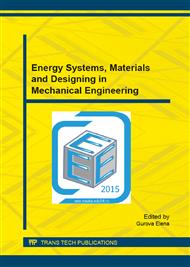[1]
S Lupi, M Forzan, A Aliferov, Induction and Direct Resistance Heating: Theory and Numerical Modeling, first ed., Springer International Publishing, Switzerland, (2015).
DOI: 10.1007/978-3-319-03479-9
Google Scholar
[2]
N. Magnusson, R. Bersås, and M. Runde, Induction heating of aluminium billets using HTS dc coils, Inst. Physics Conf. Series, 181 (2004), 1104–1109.
Google Scholar
[3]
S. Lupi, M. Forzan, Promising high efficiency technology for the induction heating of aluminium billets, Przeglad Elektrotechniczny, 84 (2008), 105-110.
Google Scholar
[4]
M. Fabbri, M. Forzan, S. Lupi, A. Morandi, P.L. Ribani, Experimental and numerical analysis of DC induction heating of aluminum billets, IEEE Transactions on Magnetics, Vol. 45. 1 (2009), 192-200.
DOI: 10.1109/tmag.2008.2005794
Google Scholar
[5]
R. Araneo, F. Dughiero, M. Fabbri, M. Forzan, A. Geri, A. Morandi, S. Lupi, P.L. Ribani, G. Veca, Electromagnetic and thermal analysis of the induction heating of aluminium billets rotating in DC magnetic field, COMPEL,. 27- 2 (2008), 467-479.
DOI: 10.1108/03321640810847751
Google Scholar
[6]
F. Dughiero, M. Forzan, S. Lupi, F. Nicoletti and M. Zerbetto, A new high efficiency technology for the induction heating of nonmagnetic billets, COMPEL, 30-5 (2011), 1528-1538.
DOI: 10.1108/03321641111152685
Google Scholar
[7]
F. Dughiero, M. Forzan, M. Zerbetto,. Multi rotors permanent Magnet Heater for controlling temperature distribution in aluminum billets., IEEE Industrial Electronics Society, IECON 40th Annual Conference (2014), 3252 - 3257.
DOI: 10.1109/iecon.2014.7048977
Google Scholar
[8]
P. Di Barba, Y. Pleshivtseva, E. Rapoport, M. Forzan, S. Lupi, E. Sieni, .. & A. Nikanorov, Multi–objective optimisation of induction heating processes: methods of the problem solution and examples based on benchmark model, International Journal of Microstructure and Materials Properties, 8-4 (2013).
DOI: 10.1504/ijmmp.2013.057072
Google Scholar
[9]
Di Barba, P., Forzan, M., & Sieni, E. Multi-objective design of a power inductor: a benchmark problem of inverse induction heating. COMPEL: The International Journal for Computation and Mathematics in Electrical and Electronic Engineering, 33-6 (2014).
DOI: 10.1108/compel-11-2013-0350
Google Scholar
[10]
Information on http: /www. cedrat. com.
Google Scholar
[11]
F. Dughiero, M. Forzan, C. Pozza, N. Sempreboni, Permanent magnet heater for aluminium strips continuous annealing lines, Proceedings of MEP2014, Hannover (2014).
Google Scholar
[12]
P. Karban, F. Mach, I. Dolezel, J. Barglik, Higher-order finite element modeling of rotational induction heating of nonferromagnetic cylindrical billets, COMPEL, 30-5(2011), 1517-1527.
DOI: 10.1108/03321641111152676
Google Scholar


